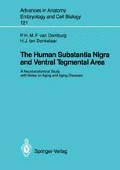Abstract
Although it has been known for many years that various disturbances of movement and posture are associated with lesions in one or another of the basal ganglia (e.g., Wilson 1914; Denny-Brown 1960, 1962; Denny-Brown and Yanagisawa 1976; DeLong and Georgopoulos 1981), it is still not possible to account for individual symptoms, such as tremor, rigidity, or athetosis, in terms of normal or abnormal functioning of a particular component of the basal ganglia. Tremor cannot be produced in animals by lesions limited to structures of the basal ganglia. Neither electrolytic lesions of the SN nor 6-hydroxydopamine (6-OHDA) lesions of the ascending DAergic pathways from the SN and adjacent VTA produced tremor (Poirier 1960; DeLong and Georgopoulos 1981). It is only when lesions of the ascending cerebellar efferents are combined with nigrostriatal lesions that tremor appears. The usual site at which lesions are placed is in the VTA of the midbrain. Here, the lesions interrupt several pathways involving the SN and red nucleus: nigrostriatal, cerebellorubral, cerebellothalamic, and rubroolivary tracts. The conclusion is that parkinsonian rest tremor is not due to a purely striatal DA deficiency, but that damage to other structures, particularly the cerebellorubrothalamic projections, must also be involved. The ventrolateral thalamic nucleus has long been known to be involved in tremor generation (see I.S. Cooper et al. 1968). Hypokinesia and rigidity, cardinal features in Parkinson’s disease, are hypothesized to result from a complex series of changes resulting in an increase in basal ganglia output, particularly to the ventrolateral thalamic nucleus (DeLong and Georgopoulos 1981; Albin et al. 1989).
Access this chapter
Tax calculation will be finalised at checkout
Purchases are for personal use only
Preview
Unable to display preview. Download preview PDF.
Author information
Authors and Affiliations
Rights and permissions
Copyright information
© 1991 Springer-Verlag Berlin Heidelberg
About this chapter
Cite this chapter
van Domburg, P.H.M.F., ten Donkelaar, H.J. (1991). Functional and Pathophysiological Considerations. In: The Human Substantia Nigra and Ventral Tegmental Area. Advances in Anatomy Embryology and Cell Biology, vol 121. Springer, Berlin, Heidelberg. https://doi.org/10.1007/978-3-642-75846-1_7
Download citation
DOI: https://doi.org/10.1007/978-3-642-75846-1_7
Publisher Name: Springer, Berlin, Heidelberg
Print ISBN: 978-3-540-52823-4
Online ISBN: 978-3-642-75846-1
eBook Packages: Springer Book Archive

